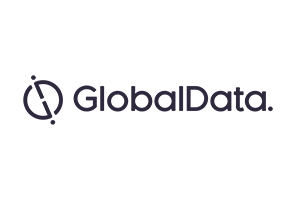The US Senate passed the country’s first major tax reform in over 30 years last month, and the ramifications on the pharmaceutical industry could be vast. The tax reform includes a huge cut in the overall tax rate, down to less than 20% for most companies, leaving large pharmaceutical giants with an influx of excess cash. This has the potential to significantly alter the market as companies allocate the excess to various strategies, including opening new plants, rewarding stakeholders, and most interestingly, looking for mergers and acquisitions (M&A).
M&As are pursued for four main reasons: to acquire drugs in a market where the company already has a presence, which in turn increases market share (market penetration); to add complementary therapies to its existing portfolio (product development); to build on existing competencies in a new market (market development); and to add new products in a new market (diversification).
All of these strategies have been used to a varying extent in the previous three decades. Indeed, out of the 42 original members of the Pharmaceutical Research and Manufacturers of America (PhRMA), only 11 currently remain. When looking back at the recent history of M&A deals, it is apparent that they occur in waves, the first of which was from 1999 to 2002, followed by 2004 to 2009, and finally from 2014 to 2016. With Sanofi’s two recent acquisitions, Ablynx ($4.8B) and the Biogen spin out Bioverativ ($11.6B) in January 2018, it begs the question, “Will the recent tax reform trigger the next wave of M&As?”
The signs seem to indicate that this is indeed the case. As mentioned above, Sanofi has announced two multi-billion dollar buys to boost its rare disease pipeline, acquiring drugs for rare blood disorders that are reaching approval. In addition, in January 2018, Celgene completed buyouts of Juno Therapeutics ($9B) and Impact Biomedicines ($7B) to expand its oncology pipeline. On the merger front, Impax Laboratories and Amneal are looking to close their merger in H1 2018, propelling the newly formed company to become the fifth largest generics maker in the US.
Other companies are on the lookout for mergers, with Novo Nordisk’s Chief Executive Officer (CEO) stating that the company is keeping an eye out for M&A opportunities after its failed bid for Ablynx, Biogen and AbbVie looking for pipeline boosting assets, and Acorda Therapeutics sounding out potential buyers after having a difficult year in 2017. Teva, which was involved in one the major deals of the last M&A wave, a $41B buyout of Allergan’s generics unit, may turn to this strategy again to address an increasing set of problems for the company.
There are several factors for Teva to consider, such as key patent expiries and mounting debt ramping up pressure on the company, the restructuring of the company including mass job and research cuts, and the excess cash coming in from tax reform; due to these factors, it is possible that the company is looking at deals for an immediate boost in revenues.
However, for all the talk of another M&A wave, several pharma giants have stated they are not expecting to do any M&A deals, including Pfizer, Roche, and Merck & Co. Instead, these companies are opting for organic growth by investing cash back into each company. This strategy could see investment into research and manufacturing, which would in turn lead to an increase in the number of jobs.
There are several reasons why these pharma giants would not want to pursue a deal, including the fact that companies that grow through acquisition typically have to pay the standing value of the acquired company, as well as a takeover premium.
Additionally, several studies have shown that organic growth can generate more value for the company in the long term, although this strategy can take more time and effort compared to M&As. However, with poor growth forecast for many of the pharma giants, it may not be too long before they start to look at M&A as a short-term fix.
If this is indeed a new M&A wave, which can be best described as a flurry of deals occurring within a short space of time, then it began with Sanofi and Celgene taking over specialist players to boost their pipelines, and is likely to continue with other companies also on the lookout. Sparse pipelines and patent expiries for the largest pharma companies mean that organic growth may be difficult to come by in the next few years.
As such, GlobalData expects that the pharmaceutical industry will see an increasing amount of consolidation in the industry with a high number of M&A deals.




